Oven Jerky
Dr. Terry M. Trier
Simply defined, jerky is raw meat that has been dried slowly to reduce moisture. The result is a good tasting lightweight food that is well-preserved and will last for incredibly long periods of time. Itís an excellent trail food and an experienced outdoorsman or bushcrafter will rarely go into the wilds without an ample supply. Its value as a survival ration is legendary. It is so light that I always take more than I need to share with others I encounter on the trail. It has brought a smile to a lot of hungry hikers over the years and with good reason: itís delicious!
Jerky is readily available nowadays, but itís almost never cheap. The good news though is that you can make your own jerky at home and it requires no special tools, ingredients, or drying ovens. You can easily make it in your kitchen oven and itís every bit as good or usually even better than what you buy commercially. Often the commercial varieties are too thin for my taste so I almost always prefer homemade.
The first step is to check out the oven. An electric oven is preferred but you can also make jerky in a gas oven by just using the heat from the pilot light. You can test the oven using a thermometer. Place a thermometer in the oven and leave the door cracked open just a hair. This will allow moisture to escape. Turn the oven on to its lowest setting or if gas, try the pilot light to begin with. Come back in an hour and check the temperature. It should read around 150-160 degrees F (66-71 degrees C) or less. If the temperature is higher, try opening the door a little wider (you want to dry the meat, not cook it). If itís lower, that usually means that it will take longer for the meat to dry (you might try adding a light bulb). One last note: make sure that only the bottom burner is hot.
Jerky is best preserved if you use a lean cut of meat. I like beef sirloin tip although venison is even better. Lay the meat out flat and sprinkle some spices on it. I like to use garlic powder or seasoned pepper but I also frequently experiment. A dash of cayenne never hurts. Then LIGHTLY tap the meat with a meat tenderizer, not to tenderize the meat but to drive the spices into the meat. Did I say LIGHTLY tap?
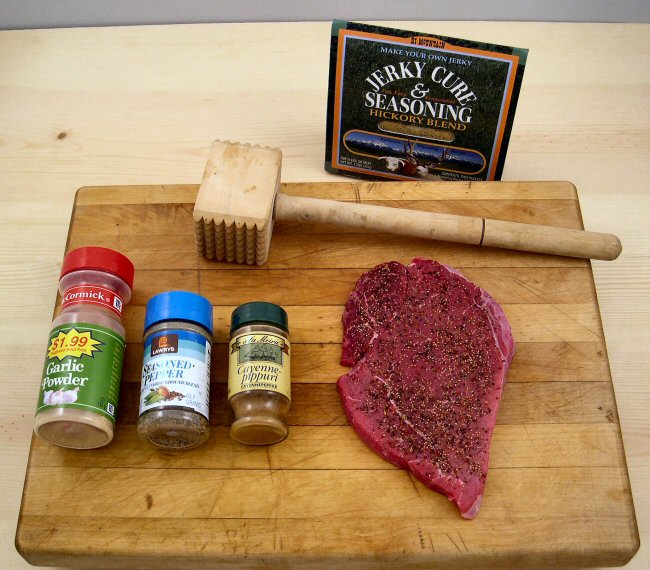
Using a razor sharp knife, cut the meat into fairly thick strips about 1 cm thick (approximately 3/8"). I like to cut across the grain to make it easier to chew. If you like your jerky stringy and chewy, cut it with the grain.
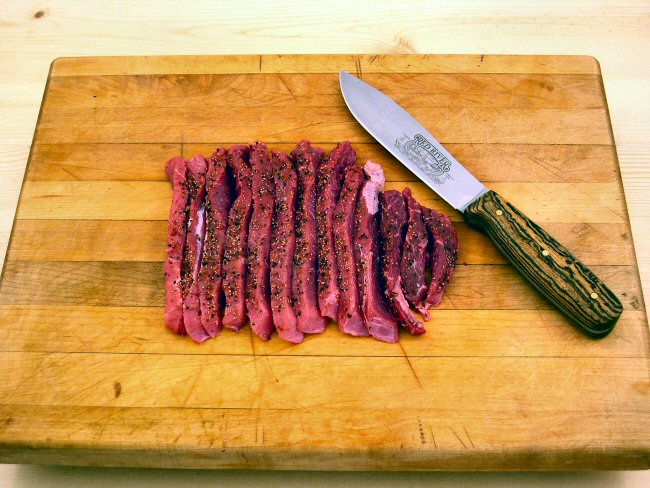
Dump it in a locking plastic bag or bowl and pour in some marinade. I like a combination of liquid smoke, soy sauce, and hot sauce. Experiment! Let soak for at least 4 hours. You may occasionally want to squeeze or stir your marinade to get a good soak.
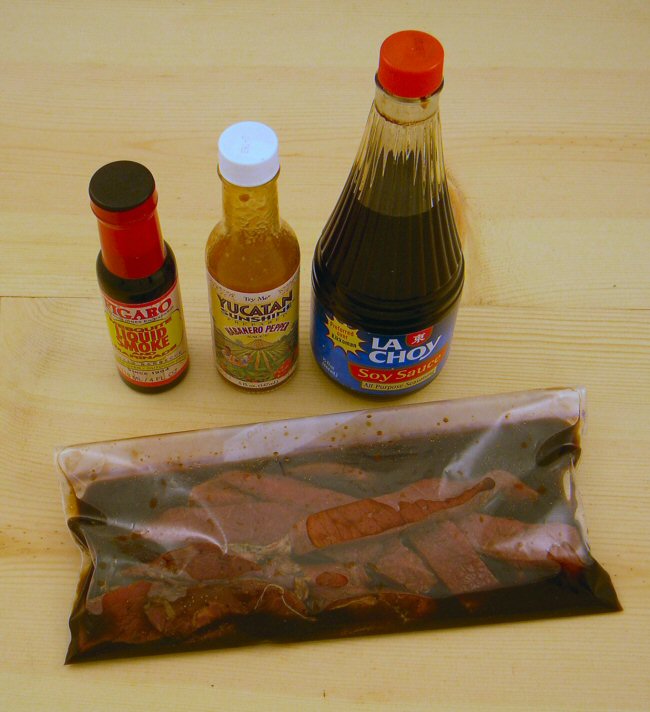
Line the bottom of your oven with aluminum foil. Put your oven rack on the highest rung (top of the oven). Now take a tooth pick and stick it through the end of one of your strips.
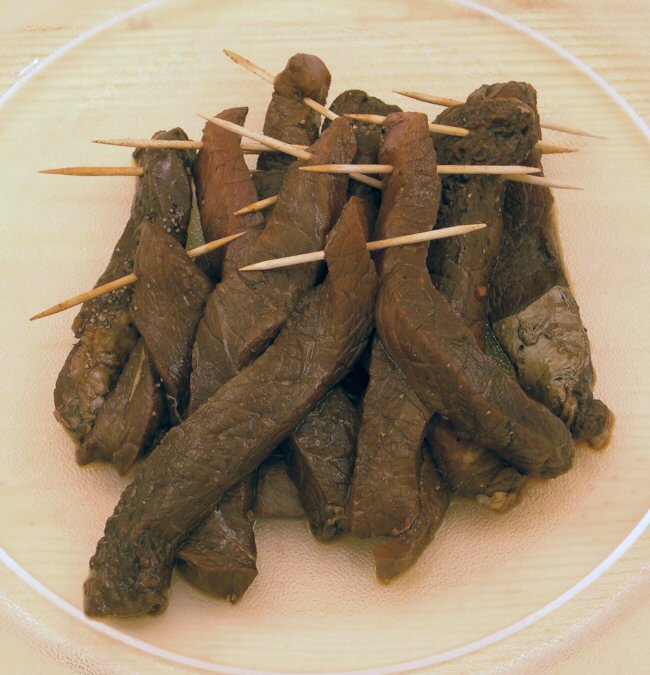
Hang the strip on the rack by the toothpick so that the meat hangs vertically.
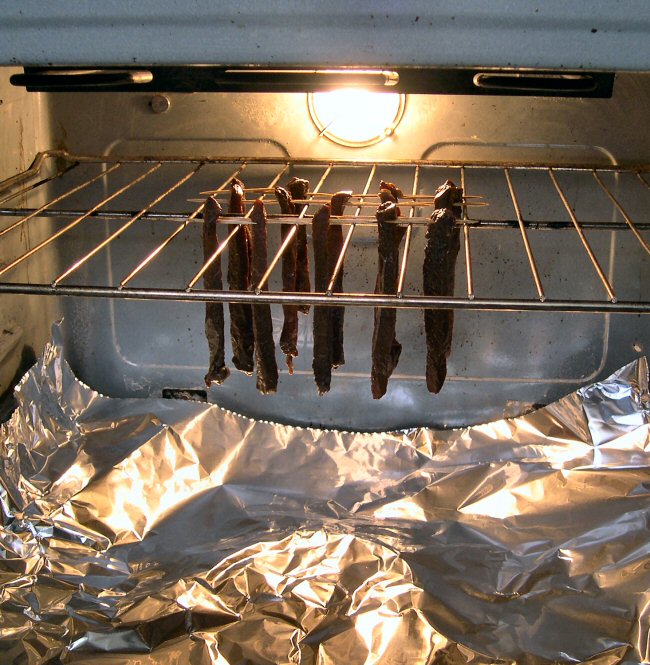
Once you get all the meat strips hung, turn the oven on to its lowest setting (150-160 degrees F, i.e., 66-71 degrees C), prop the door open 1/4" (approximately 0.6 cm) with a stick to let the moisture escape (or whatever you determined by your initial testing), and go have an ale. Then go to bed. When you get up the next day, you will have lovely dried jerky! It should take about 6 to 8 hours to dry. Properly dried jerky should feel dry to the touch. Take a piece and bend it. If it snaps in half, you over-dried it. It should bend without breaking, yet you should see some cracks at the bend.
Remove toothpicks and enjoy!
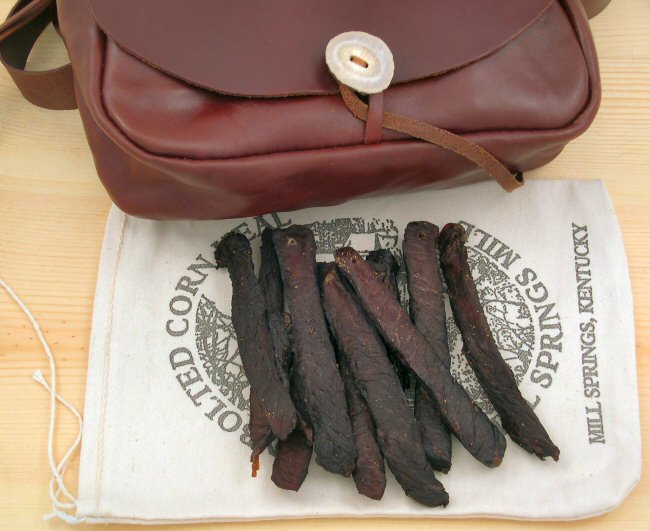
©2004 Terry M. Trier